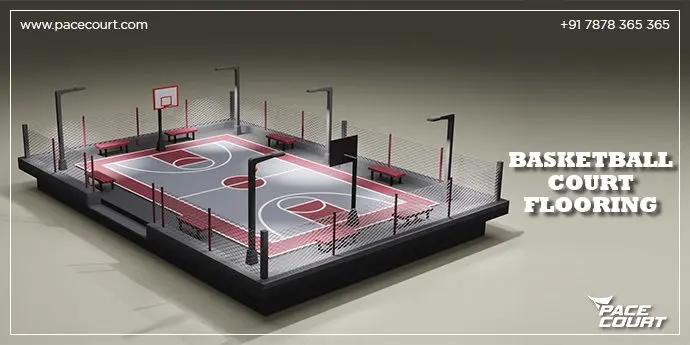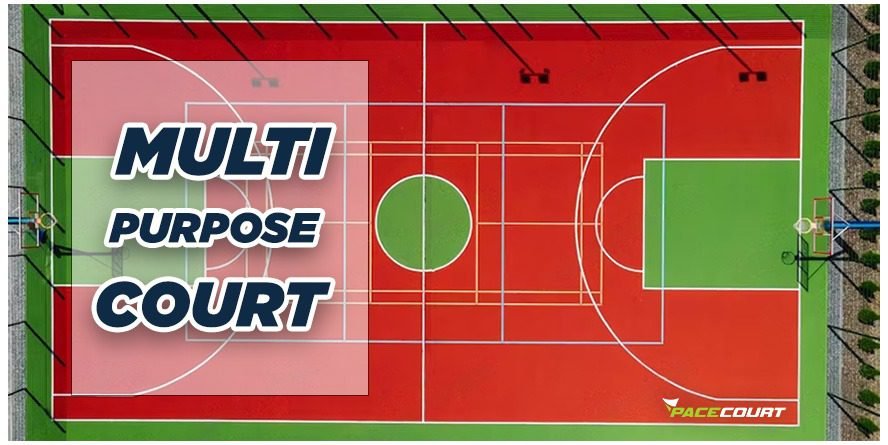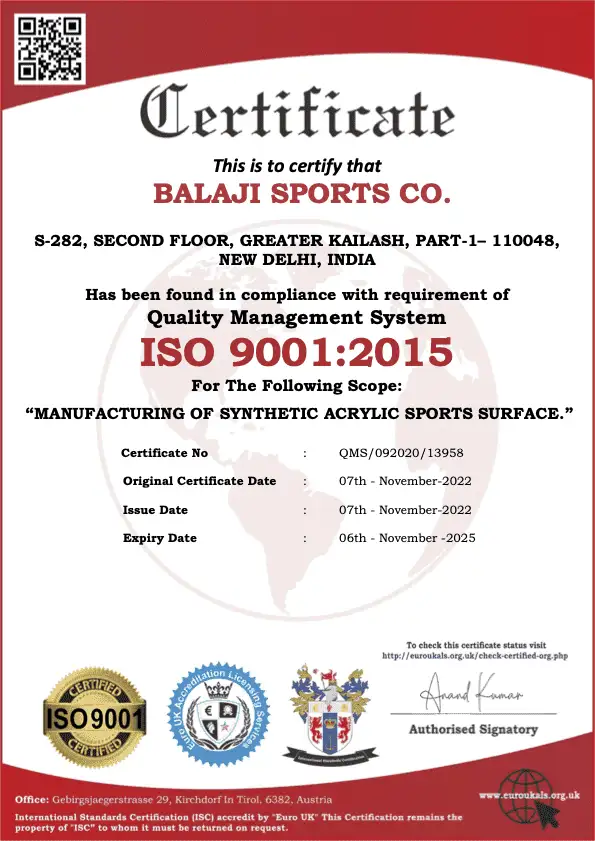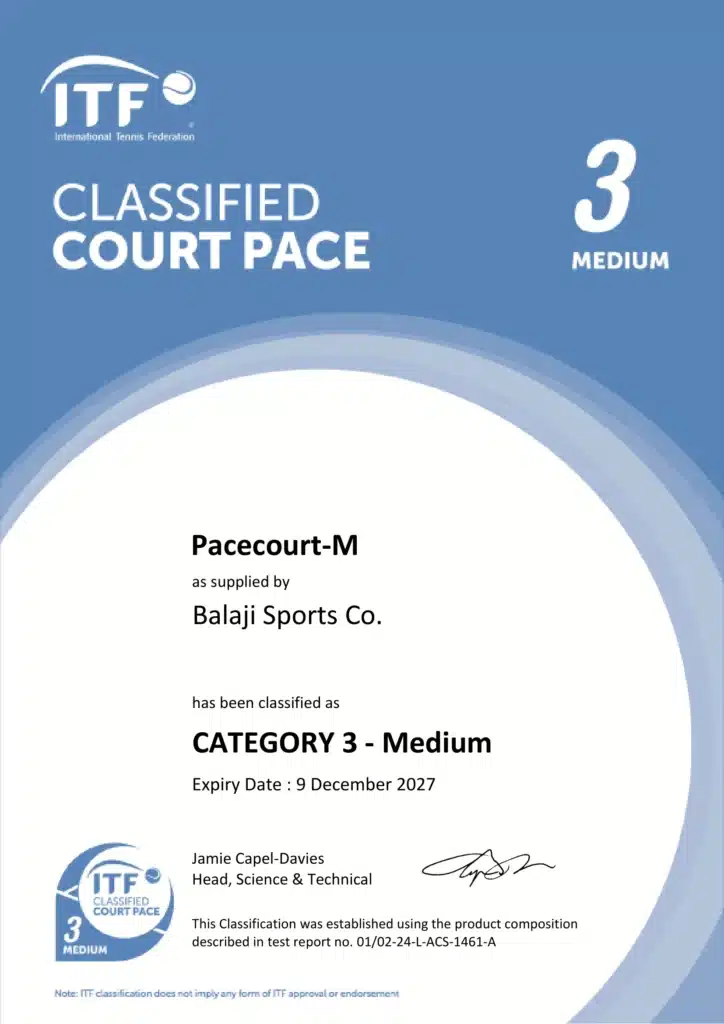Introduction The condition of the flooring can have a significant impact on how well or poorly players experience outdoor sports and gaming courts. Synthetic surfaces are the best choice for badminton courts because they offer an excellent and durable playing surface. At Pacecourt, we recognize that outdoor badminton courts have to offer an ideal blend of robustness, security, and favorable playing circumstances. This is also the cause of the continued growth of synthetic systems in the sports industry, particularly those based on acrylic. This is a comprehensive guide that covers every aspect of installing synthetic flooring for outdoor badminton courts. This tutorial covers all the necessary information to build an extremely durable outdoor badminton court, including materials, surface preparation, and case studies. Why Choose Synthetic Flooring for Outdoor Badminton Courts? Synthetic flooring, especially acrylic, is superior to other flooring options when it comes to badminton on outdoor courts. It offers many benefits, including resistance to weather, user comfort, low maintenance, and customizable design. Durability and Weather Resistance Outdoor badminton courts are constantly exposed to the elements, including wind, rain, and sun. Temperature fluctuations also occur frequently. For this reason, synthetic outdoor badminton court flooring material—especially those based on acrylic—have been engineered to satisfy these needs without sacrificing performance. Robust acrylic coatings have the ability to provide a water-resistant barrier that blocks UV radiation and remains intact in extremely hot or cold temperatures. Optimal Playing Conditions The performance and safety of the players on the court are the primary considerations while building any sports court. The same strategy applies to badminton courts as well. Regularly scuffing up surfaces increases the chance of trips and falls and helps with dexterity and gait. Since the surface is composed of acrylic, it has a cushioned feel to it that is soft and helps to absorb impact, reducing the strain on the joints and muscles during intense sports. Low Maintenance One of the biggest advantages of synthetic flooring is how little upkeep it requires. For e xample, acrylic floors require little to no upkeep to stay vivid and firmly fastened, but traditional surfaces may fracture, distort, or discolor. A few cleaning procedures, that is, for instance, sweeping the floor, and washing once in a while, are adequate to keep the court in good form. Customizable Design Synthetic badminton courts take into account more than just functioning; the surrounding architecture is also taken into account. When it comes to the design of courts, acrylic synthetic flooring enables customization of the court’s color, texture, and pattern, guaranteeing that each court has its personality or brand. These aesthetic features will help the court become more marketable to recreational users and competitors. Step-by-Step Guide to Installing Synthetic Badminton Court Flooring Let’s now move on to the process of installing synthetic badminton court flooring outside. Despite being a specific process, following these guidelines will help ensure that your court remains intact throughout time, presentable, and prepared for use. Step 1: Assessing the Site and Preparing the Base It is usually advisable to conduct an assessment of the site where the court will be located before beginning any construction. This assessment helps to verify that the ground will be adequate for putting up an artificial badminton court. Crucial components consist of: Step 2: Laying the Sub-Base The sub-base serves as the foundation for the installation of flooring made of synthetic acrylic. The majority of the time, a robust, solid subbase made of crushed stones or compacted gravel provides the required stability and guarantees an even court surface. You will need to add geotextile fabric or increase the thickness of the sub-base material to give it greater solidity if the base of your location is clay or soft soil. Step 3: Installing the Asphalt Layer Once the sub-base is in place, the next step is laying an asphalt layer. This layer provides additional strength and serves as a smooth, even surface for the acrylic coating to adhere to. Asphalt offers excellent durability and flexibility, making it ideal for outdoor courts that experience temperature changes. A properly laid asphalt layer ensures that the synthetic flooring will remain crack-free and in top shape for years. Step 4: Applying the Acrylic Coating System When the asphalt layer is complete, the acrylic coating system can be put into place. This is where the artificial flooring begins to take shape. The acrylic system is applied in multiple layers, each of which serves a specific purpose. To maintain an even performance level throughout the whole court, every coat of the acrylic system should be applied evenly. It’s a lengthy procedure that, depending on the weather, might take several days because each layer must dry completely before the next can be put. Step 5: Court Line Marking It’s now time to paint the badminton court lines after the acrylic coating system has been installed and fully cured. Here, accuracy is crucial because the right line markings are essential to the game’s fairness. The use of high-quality acrylic paint is essential since the lines need to be highly visible and resilient to scratches. Badminton courts have specific dimensions that must be adhered to: Make sure that the lines are drawn in a straight manner and spaced out accordingly, and respect the dimensions given in the official badminton court diagram. Step 6: Post-Installation Inspection Once the court is complete, conduct a final inspection to ensure everything is in order. Check for any uneven surfaces, cracks, or imperfections in the line markings. A smooth, well-finished court will provide a high-quality playing experience and a long lifespan. Tips for Long-Term Maintenance Even though synthetic badminton court flooring price is low and is easy to maintenance, it still needs to be properly cared for to last as long as possible. The following advice will help you keep your outdoor badminton court in top condition: Case studies Case Study: Upgrading a Public Park Tennis Court To improve the playing experience for the local community, the Delhi Public Park decided to upgrade its aging tennis













